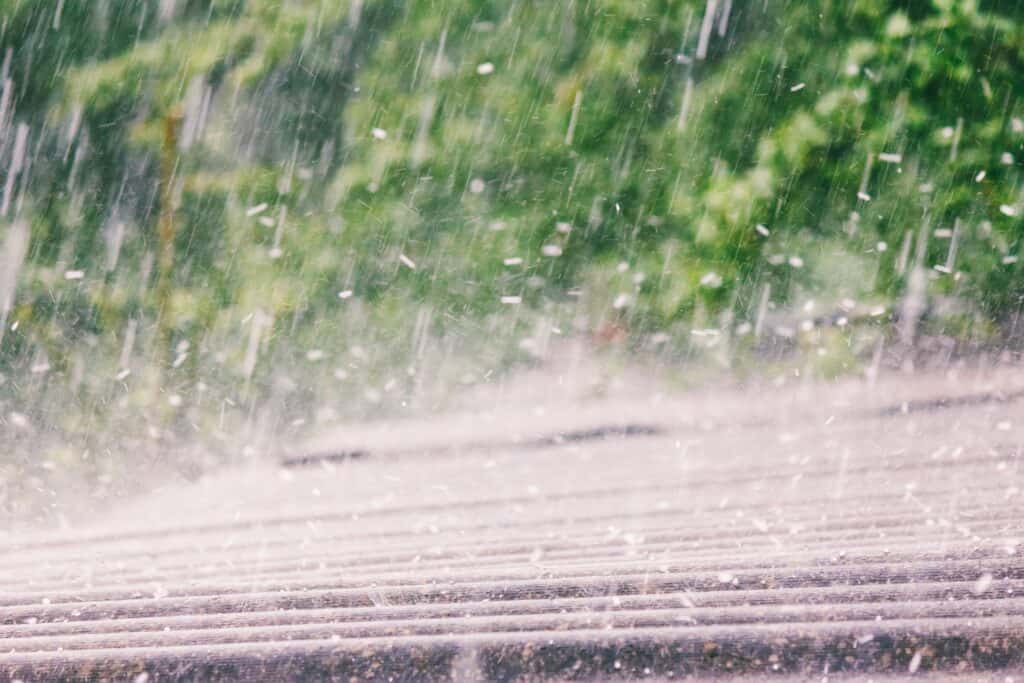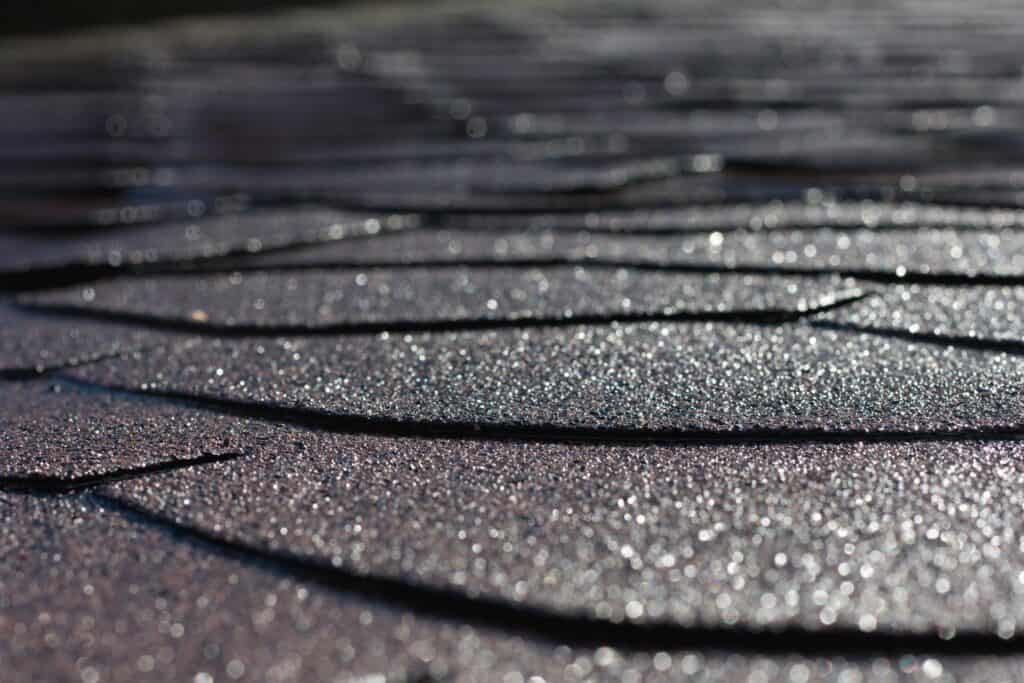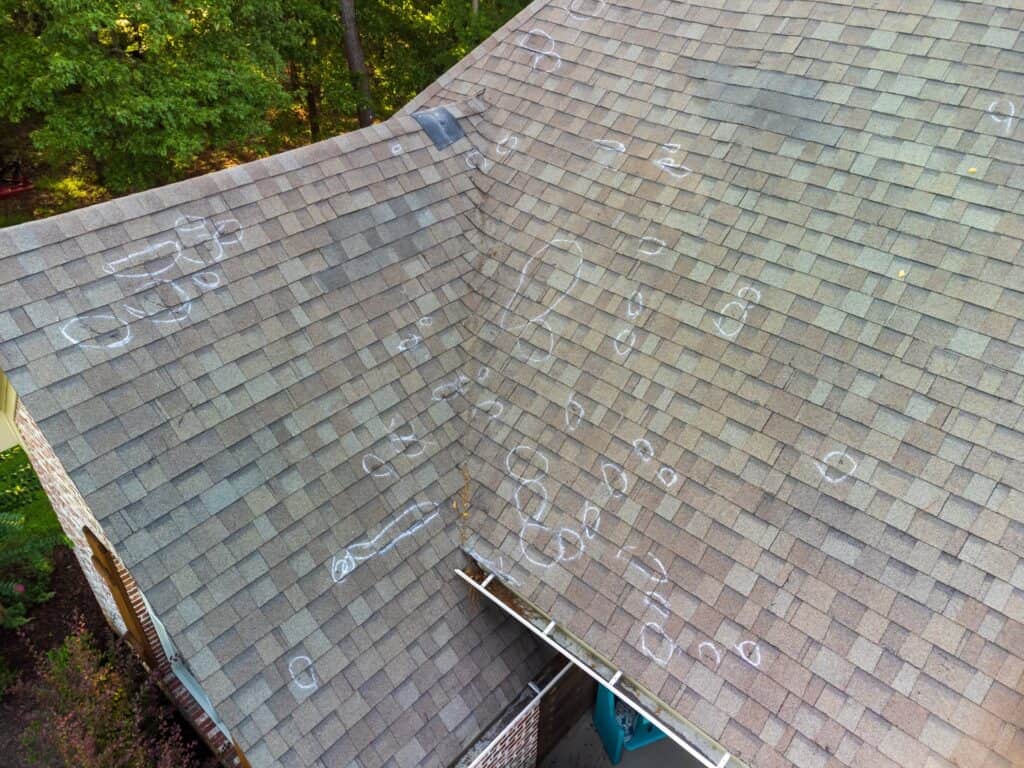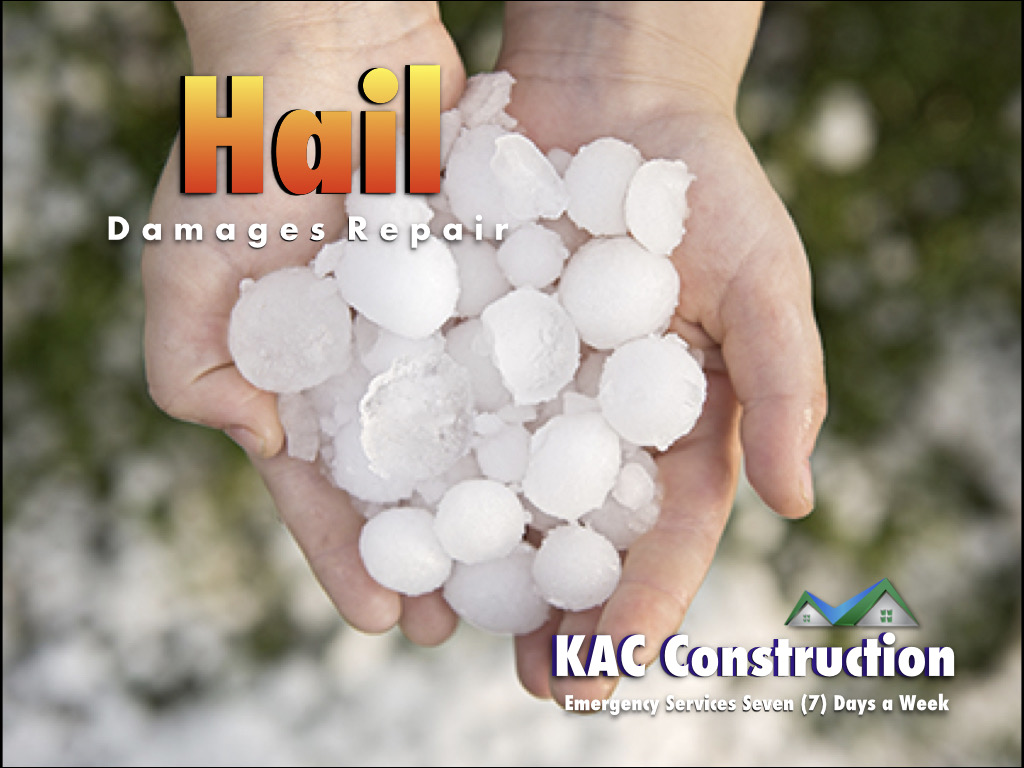Can a hailstone puncture a roof? Do small hailstones cause damage? Unfortunately, the answer is yes to both. In this article, we’ll take a look at just how much hail damage needs to happen before a roof replacement is necessary.
Hailstones are formed when drops of water freeze in the clouds. Between 5 millimeters and 15 centimeters in diameter, these hailstones may be round or irregular in shape. Sometimes, they are even jagged and pointy.
During a thunderstorm, hailstones drop to the ground at speeds between 25 and 40 miles per hour. And since they are icy and sometimes jagged, you can imagine how much impact they hit with and the amount of damage they can do.
How Does Hail Damage a Roof?

According to National Geographic, hail is formed when drops of water freeze together in the cold upper regions of thunderstorm clouds. As frozen droplets begin to fall from the clouds, they’re repeatedly lifted back up by an updraft. Each time the growing hailstone is lifted, it combines with additional moisture which adds another layer of ice.
Once the hailstone is heavy enough to escape the updraft, it falls from the sky.
Hail can be up to 4 inches in diameter or more and some hailstones fall at over 100 mph. That type of hail can do serious structural damage to property and is a leading cause of roof insurance claims.
On average, it takes hail that’s 1 inch or larger to cause damage to regular 3-tab organic asphalt shingles. Hailstones that are less in size may do less damage. Damage may include:
- Tears
- Fractures
- Punctures
- Flaking off of granules.
Large hailstones can also shatter other roofing materials such as wood shake, concrete, and clay tile roofing.
How Important Are Asphalt Granules?

When hails strike shingles, dents are formed, and granules come off. These granules may fill gutters. In addition, since the asphalt underneath is now exposed to the elements, it becomes loose.
A few weeks later, exposure to the harsh rays of the sun or extreme cold weakens the asphalt layer more and makes the shingles brittle. As the shingles become more exposed, they become more vulnerable to ultraviolet damage.
As the granules curl at the edges and continue to peel off, water may seep into utility closets, ceiling fans, or ceiling lights, causing a lot of problems. Plus, the wood surrounding the area may become moldy, promoting more moisture and the growth of algae.
Further, hail can cause damage to aluminium siding and gutters. Worse, the larger hailstones (softball-sized) are strong enough to puncture a roof, especially the older and more fragile ones.
All of these issues, which are a direct result of hail damage, are exactly why we recommend getting a roof inspection immediately following a hail event. The sooner you get an inspection, the better your chances of filing a successful insurance claim.
Tell-Tale Signs Of Hail Damage on a Roof

After a hailstorm, you may notice the following damages:
Dents in the shingles
You may see dents when hail has dropped on or bounced off shingles. For the larger hailstones, you may see round-shaped dents in your shingles.
For a heavy storm involving hail, you can see some shingles that have become shiny, due to the granules that have fallen off.
Gutters or downspouts may contain granules
Hailstones bouncing off your asphalt shingles can cause the granules to come off. You may not see this when looking at your roof, but you may be able to spot granules in your gutters. This is a telltale sign that your roof is experiencing damage and deterioration.
Water leaks
As the granules flake off the shingles, the roofing is exposed, and water can begin to flow through your roof. Moisture building up in the decking below can lead to leaks, damaged ceiling lights and fans, and mold.
Mold on your roof can eat away or erode your roof, leading to expensive repairs. It also attracts sunlight because of its dark color, trapping heat in your home and leading to higher electricity bills.
Mold inside your home, on the other hand, is even more detrimental. Mold is especially dangerous to your health as it has toxic chemicals which can cause gastrointestinal symptoms like diarrhea and vomiting.
Other illnesses caused by dampness and mold are respiratory symptoms such as asthma, bronchitis, and other infections.
How Much Hail Damage Does There Need to Be to File an Insurance Claim?

Most homeowners’ policies pay hailstorm losses, even if your roof is old. How much hail damage does there need to be to replace your roof with an insurance claim? That’s hard to say. There’s no specifically defined standard.
If you suspect your roof has hail damage, you need to schedule a free roof inspection. We’ll come out and do a professional inspection with full documentation of the hail damage or send out one of our drone roof inspection teams to document everything.
Once our inspection is done we’ll be able to guide you on next steps. That might be roof repair or a full roof replacement.
The inspector will tell you how much damage there is and whether or not you should pursue an insurance claim at that point based on our experience.
What to Do After a Hailstorm
The steps you take immediately after a hail storm are very important. This can make or break your chances at filing a successful insurance claim.
1. Document the Damage
It would help if you could take pictures or videos of all the damage. This doesn’t just mean photos and videos of your roof. Damage to gutters, pipes, siding, vehicles, windows, etc. should all be documented.
If the damage was severe enough to cause leaks, make sure you document all interior damage as well.
2. Prevent Further Damage
You want to show that you did everything possible to prevent further damage from occurring. Typically this involves leaks and water damage issues.
For example, you can schedule your roof to be tarped to cover any holes where leaks are occurring. You can use buckets and towels to catch and absorb any leaking water. Just make sure you document the steps you took to prevent additional damage.
Save receipts for expenses to repair the damage for possible reimbursement from the insurance company.
3. Review Your Insurance Policy
Find out what your policy says about hail damage. Most policies cover hail damage, but you want to make sure you’re familiar with the policy details. When your inspector comes to determine the extent of the damage, it’ll be helpful if you can pass along your policy details.
Do You Need an Inspection?
A roof inspection is mandatory to evaluate and determine what kind of service your roof needs and to professionally document damage in preparation for filing a claim.
Contact us today to schedule your free roof inspection.